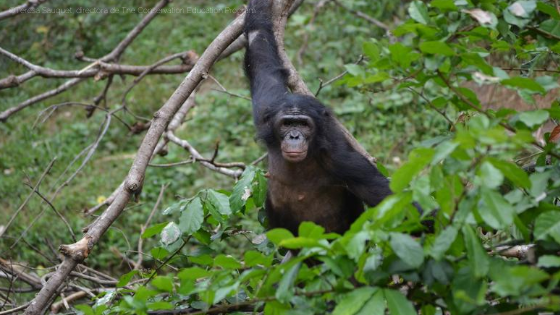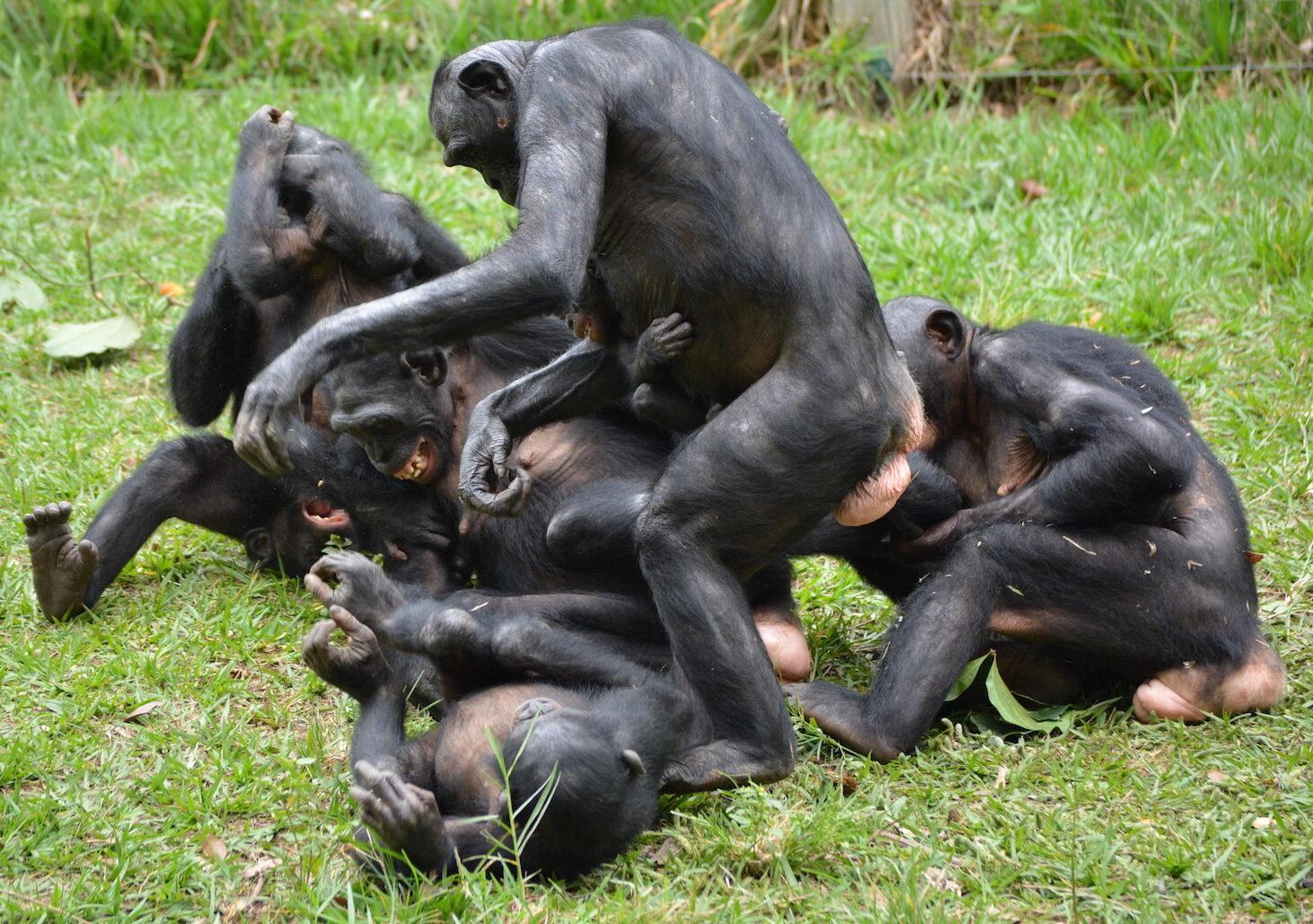
Bonobos
The bonobo (Pan paniscus) is, probably, the less known Great Ape. It was classified in 1929 by Ernst Schwarz. Until that moment, it was classified within the chimpanzee species. The bonobo is the smaller Great Ape. They measure around 1,20 m and their weight is around 40 kg. Males usually are a little bigger than females.
They are endemics of the Democratic Republic of Congo, in an area bounded by the Congo River, to the north; and the Kasi River, to the south. They live in the deepest part of the tropical rain-forest. Bonobos are completely adapted to their habitat, which is especially leafy. They have developed high-pitched vocalisations and the capacity to walk on two legs (it is true that also the rest of Great Apes can walk bipedal. However, bonobos used more than the rest, almost 20% of their locomotion is bipedal).
Social life

Bonobos live in matriarchal groups, which are led by an alpha female and her circle, a group formed by 4 or 5 females, where rarely there is a male. Only the favourite of the alpha female or her own son can have a place in this leading group.
In bonobo’s groups, are the females who emigrate searching a new group. Instead, males stay in their birth group during all their lifetime. This makes them “mummy’s boys”, setting a strong relationship with her. In fact, they usually inherit the hierarchical position of their moms.
Females are in charge, and their main role is to control the group. Males have a secondary paper on the hierarchy of the group. Their main role is the defence and the search of food.
In the bonobo’s society, sex is a basic behaviour with a lot of functions. They use it to relax, appease or to greet each other and they practice it between female-female, female-male and male-male. In addition, they are the only great ape that copulate frontally, belly with belly, and that kiss each other “with tongue”.
Conservation Status
Like the rest of Great Apes, bonobos are in danger of extinction. In the last 20 years, their population has been significantly reduced and the experts forecast that this situation will continue throughout the next 60 years.
The main threats of bonobos are: the poaching for consumption or for the illegal trade and the loss of habitat because of the extraction of fossil fuels and wood. Most bonobos live in protected areas, even though sometimes it is difficult to ensure compliance with the laws in these areas. At the same time, there are some groups of bonobos who live in unprotected areas.
Who can we help them?
We can all contribute to the conservation of bonobos and manage to improve their situation. There are many things that we can do from home. For example: stop buying tropical wood (or just buy certified wood), reduce our consumption or use renewable energy. On the other hand, we can collaborate with NGOs working to protect bonobos, like The Conservation Education Program , and others.
Acknowledgements
We would like to thank to Teresa Sauquet, director of The Conservation Education Program, for her time and the information and photos provided that have made possible the #LearningWithMona section this week.






